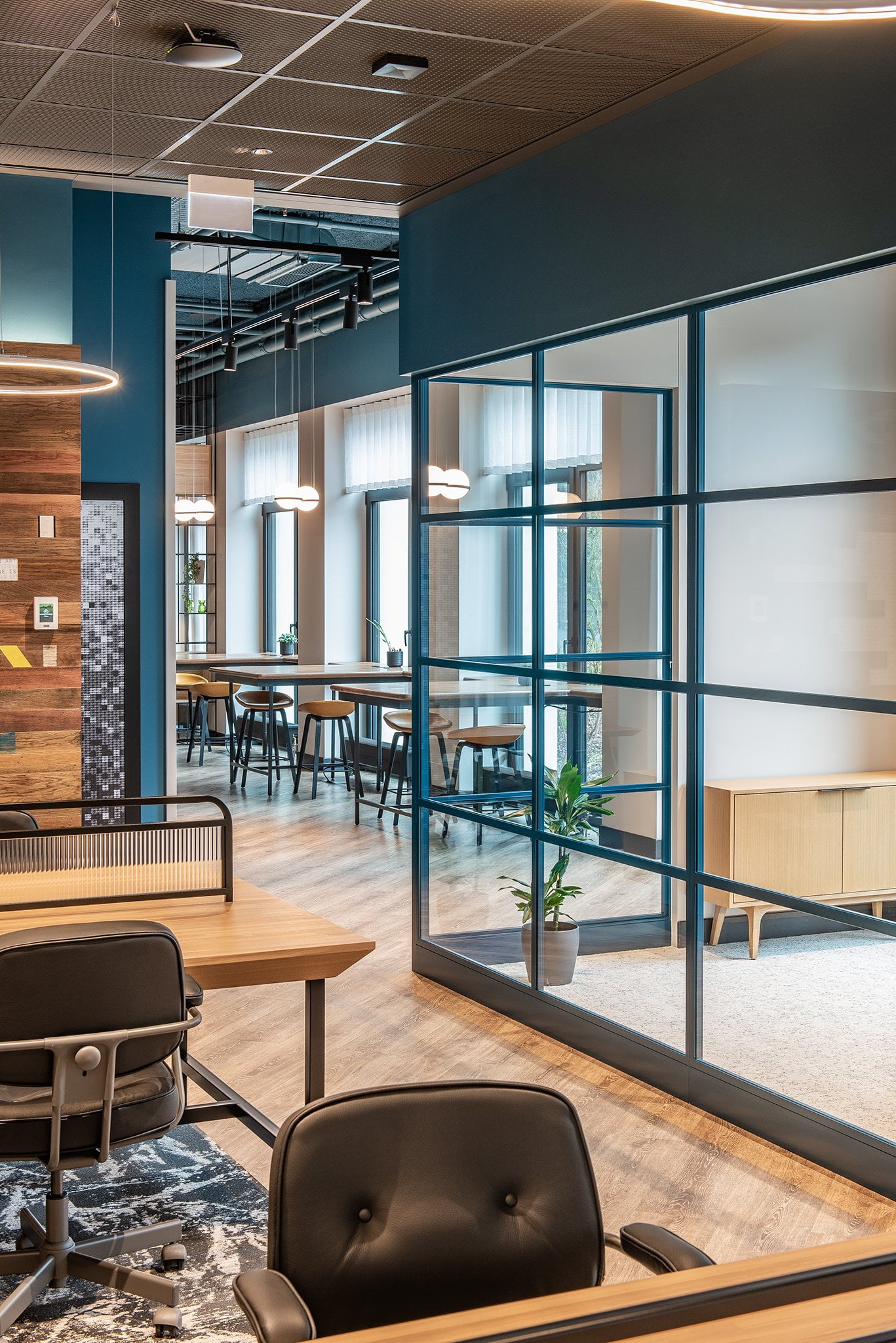
In the modern era, glass graces everything from smartphone screens to sprawling building facades, marking its pervasive presence. Its omnipresence sometimes overshadows the remarkable attributes it brings, especially in the realm of design. Glass stands as a material offering unmatched benefits, which we explore in this article:
Light and Transparency
Glass’s inherent ability to manipulate light stands as one of its prime features. Its translucency ensures a flood of natural light indoors, fostering spaces that uplift mood and boost productivity. With its ability to reflect, refract, and diffuse light, it provides a canvas for designers to craft stunning visual effects, ranging from vibrant iridescent hues to subtle reflections with frosted or textured variants.
Versatility
Glass stands as a canvas for creativity, offering unlimited versatility in terms of size, shape, and ornamental possibilities. Its ability to undergo various treatments – like coloring, coating, or laminating – allows designers and architects to explore diverse aesthetic effects and functionalities, catering to specific project demands.
Sustainability
In an age where environmental consciousness guides material selection, glass fits perfectly as a recyclable commodity. Coupled with advancements like Low-E and solar control coatings, it morphs into an energy-efficient choice, helping moderate indoor climates and thus curbing dependence on artificial heating and cooling systems.
Aesthetics
Glass naturally exudes elegance, modernity, and sophistication, effortlessly blending into various design aesthetics. Its incorporation, whether as panoramic glass walls offering breathtaking views or as sleek glass furnishings, brings a unique charm and finesse to the surroundings.
Durability and Safety
Modern manufacturing strides have elevated glass to be stronger and safer than before. Variants like laminated and tempered glass undergo special treatments to enhance their resistance and prevent fragmentation into sharp shards, promising increased safety even in unforeseen accidents.
Bridging Indoors with Outdoors
Glass serves as a seamless connector between indoor and outdoor realms, facilitating a harmonious blend of nature with living or working spaces. Its use in elements like large doors or retractable walls can morph a space, fostering a fluid transition to the outdoors.
In design, glass emerges as a frontrunner, offering a harmonious blend of transparency, versatility, sustainability, aesthetic allure, and durability. Its use can revolutionize a design, transforming it into a light-filled, vibrant, and formative masterpiece, whether in grand skyscrapers or chic furnishings. As you embark on your next design venture, remember to leverage the unparalleled advantages of glass, as it promises outcomes that might surpass your expectations.